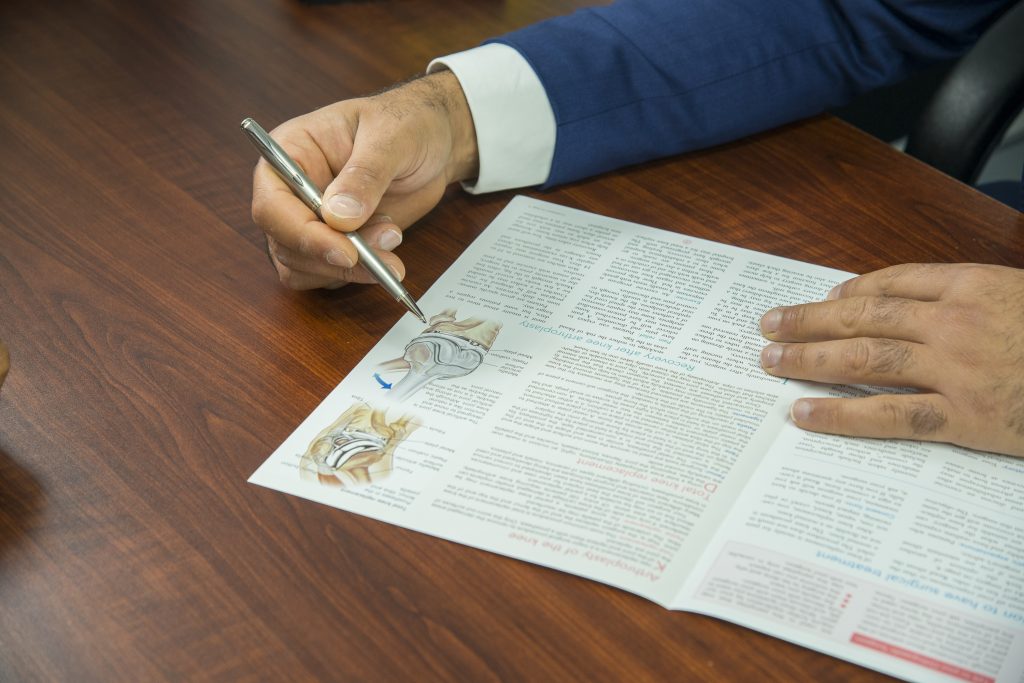Knee Replacement Surgery
What is a Knee replacement?
Total knee replacement, also called total knee arthroplasty, is a surgical procedure in which the worn out or damaged surfaces of the knee joint are removed and replaced with artificial parts. The knee is made up of the femur (thigh bone), the tibia (shin bone), and patella (kneecap). These bony surfaces are covered with a layer of cartilage 2-3mm thick which allows for painless, smooth joint motion. Separate to this, the knee also has two cartilage ring-like structures called ‘meniscus’, which serve as a cushion between the femur and tibia and help absorb shock during motion. In a normal joint, articular cartilage allows for smooth movement within the joint, whereas in an arthritic knee the cartilage itself becomes thinner or completely absent. In addition, the bones become thicker around the edges of the joint and may form bony “spurs”.
All of these factors can cause pain, restrict range of motion in the joint and lead to difficulties in performing daily activities. Your doctor may recommend surgery if non-surgical treatment options have failed to relieve the symptoms.
Total knee replacement is a commonly performed, reliable procedure for the treatment of symptoms of knee arthritis. In Australia alone, over 65,000 knee replacements are performed every year and the numbers continue to grow every year. Total knee replacement is one of the most commonly performed surgeries and has been shown to have good longevity and provide good improvement in patient quality of life.
Book an Appointment Today!
Indications
Total knee replacement surgery is commonly indicated for severe knee arthritis. Osteoarthritis is the most common form of knee arthritis in which the joint cartilage gradually wears away. It often affects older people. Other common types of knee arthritis include inflammatory arthritis conditions like rheumatoid arthritis, or after trauma or infection affecting the knee.
Dr Khatib may advise total knee replacement if you have:
- Severe knee pain which limits your daily activities (such as walking, getting up from a chair or climbing stairs).
- Moderate to severe pain that occurs during rest or awakens you at night.
- Chronic knee inflammation and swelling that is not relieved with rest or medications.
- Failure to obtain pain relief from medications, injections, physical therapy, or other conservative treatments.
- A bow- legged knee deformity.

